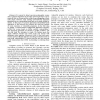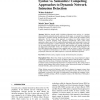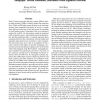20 search results - page 2 / 4 » Polygraph: Automatically Generating Signatures for Polymorph... |
ANCS
2006
ACM
14 years 3 months ago
2006
ACM
The fast spreading worm is becoming one of the most serious threats to today’s networked information systems. A fast spreading worm could infect hundreds of thousands of hosts w...
ICNP
2007
IEEE
14 years 3 months ago
2007
IEEE
—It is crucial to detect zero-day polymorphic worms and to generate signatures at the edge network gateways or honeynets so that we can prevent the worms from propagating at thei...
IJSN
2008
13 years 9 months ago
2008
: Malicious network traffic, including widespread worm activity, is a growing threat to Internet-connected networks and hosts. In this paper, we consider two competing approaches t...
RAID
2005
Springer
14 years 2 months ago
2005
Springer
Abstract. Network worms are malicious programs that spread automatically across networks by exploiting vulnerabilities that affect a large number of hosts. Because of the speed at...
USS
2004
13 years 10 months ago
2004
Today's Internet intrusion detection systems (IDSes) monitor edge networks' DMZs to identify and/or filter malicious flows. While an IDS helps protect the hosts on its l...



